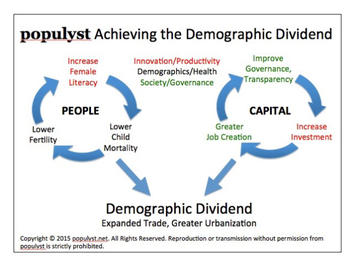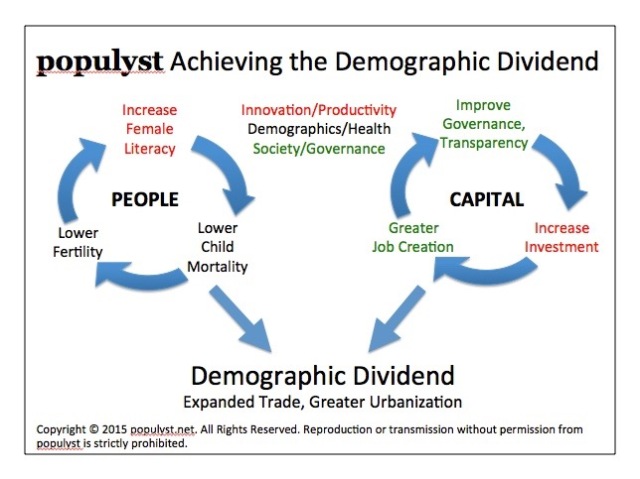
The experience of China provides a useful policy template for countries with booming populations in south and southeast Asia and in sub-Saharan Africa. The Chinese boom showed that a growing working-age population combined with a declining fertility ratio can result in a large demographic dividend if certain conditions are met. As noted in this recent post, two important drivers of lower fertility are an increase in female literacy and a decline in child mortality.
At the same time, better governance, lower corruption, an improvement in business conditions and increased investments in infrastructure and education would lead to higher foreign and domestic investments and greater job creation. Greater urbanization and an expansion of foreign trade can also be byproducts or causes or effects of the demographic dividend.

After the demographic dividend, a country can remain on a growth path through additional political and regulatory reforms that encourage innovation and strengthen institutions.
Sami Karam is the founder and editor of populyst.net and the creator of the populyst index™. populyst is about innovation, demography and society. Before populyst, he was the founder and manager of the Seven Global funds and a fund manager at leading asset managers in Boston and New York. In addition to a finance MBA from the Wharton School, he holds a Master's in Civil Engineering from Cornell and a Bachelor of Architecture from UT Austin.












